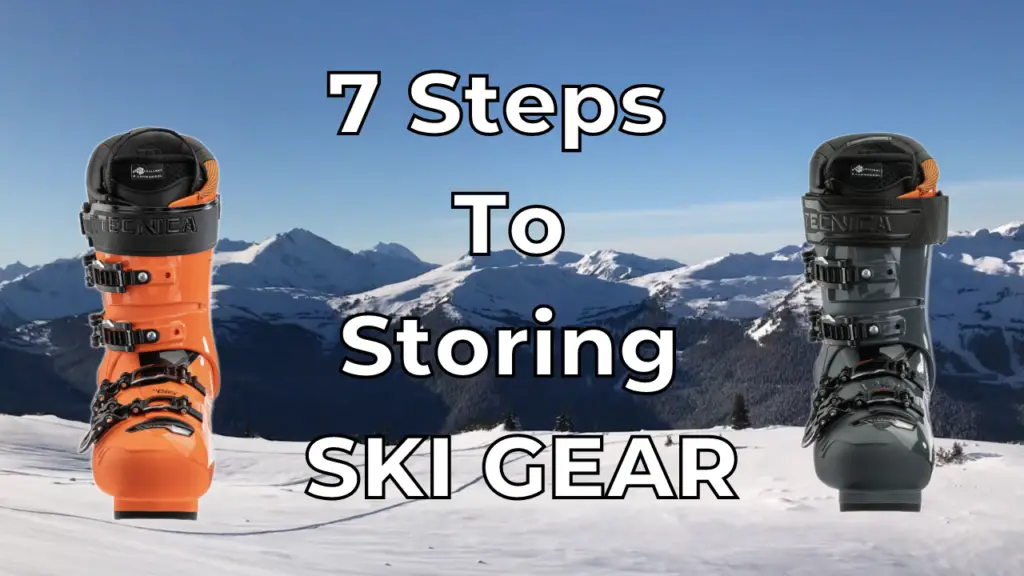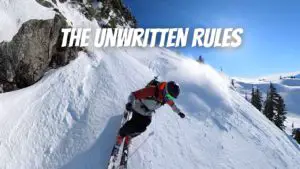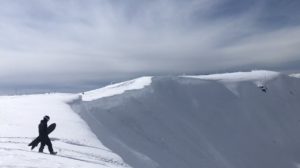There’s a single sentence that I struggle to stutter every year. Something us skiers have to say. Seven words so powerful it takes weeks conjure the strength to spell. I am forced to speak these words once a year when the wonderful wonders of winter are no more.
“IT’S TIME TO HANG THE BOOTS UP.”
Nothing hurts more than the day your local mountains snow turns to mush and the lifts stop spinning. After a great season of punching pillows, plowing through powder and barrelling down the mountainside it’s time to swallow the ever so painful pill and pack your ski gear away for the OFFSEASON.
Although the end of the ski and snowboard season is often traumatic for us snow lovers, you cannot let your emotions get the best of you and toss your ski gear away into the garage damp and dirty.
Improperly storing your ski gear is the fastest way to reduce the lifetime of your favourite boots and skis and ruin them for good. Taking the time to prepare and store your ski gear properly will prevent poor performance on the slopes next season.
HERE ARE THE 7 STEPS YOU NEED TO TAKE IN ORDER TO PROPERLY STORE YOUR SKI & SNOWBOARD GEAR IN THE OFFSEASON.
Table of Contents
Wash, Revitalize & Waterproof Outerwear
Most serious skiers and boarders wear a jacket, pant and glove combo with some sort of water repellency and breathability. This allows us shredders to stay dry, warm and regulate body temperature on the snow. No matter how expensive or waterproof your gear is, it will only last so long before it needs to be revitalized.
Dirt, oils and sweat will build up in your jacket material over time reducing the effectiveness of the waterproof coating. Thankfully, you can give your jacket, pants and gloves new life by simply washing them in a gear specific tech wash like NikWax.
Washing your gear is super simple and I’ve put together a detailed guide for you HERE. Just remember to read and follow all the care labels so you don’t damage your favourite jacket or pants! Also, don’t forget to wash your balaclava or neck gaiter and base layers so they don’t get stinky before next season.
On the west coast at Whistler Blackcomb our Ski Season starts in November/December and it is WET. Nothing feels better than starting off the season with freshly waterproofed gear so you can be dry and happy while you watch that wet snow bead off your jacket.
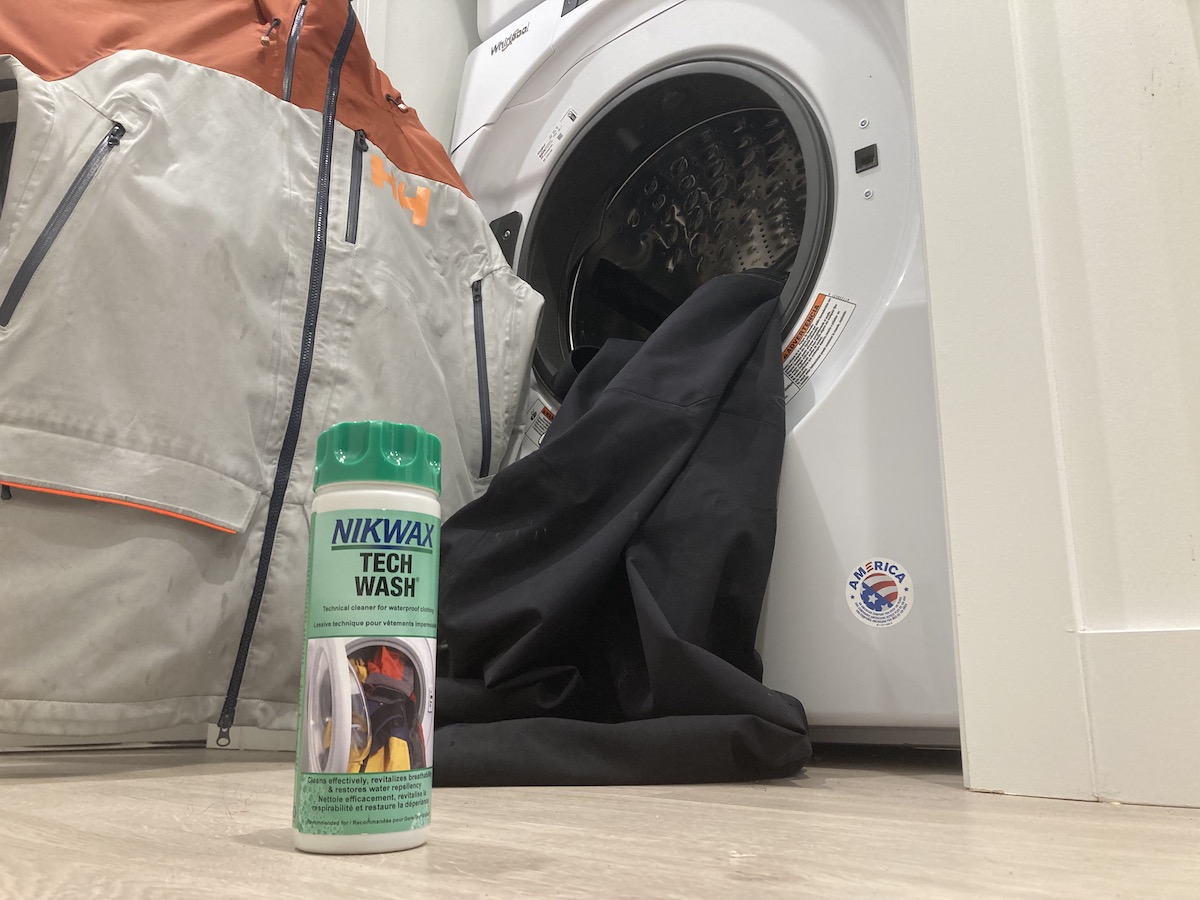
Helmet Check
Your brain (aka cranium) is your most important organ. Everyone on the mountain should be wearing a brain bucket, they are stylish and comfortable. Since your helmet is your most important piece of safety equipment you need to make sure that it is structurally sound. Check your helmet for any noticeable dents, cracks or imperfections on the shell or foam of the helmet. If anything looks off, it might be time to buy a new helmet, if everything looks great, pack it away for next year.
Goggles
Prepping your goggles for storage is simple, just make sure they are DRY. If your lenses are removable, detach them from the frame and let them dry before storing. I like to keep my favourite set of lenses on my goggles protected with a goggle sock within my goggle bag. This allows both lenses to be protected and not scratch one another.
Ski Boots
Your ski boots (especially if they fit great) are the crown jewel of your ski equipment and need to be protected at all costs. Firstly, you’ll want to clean the outside plastic shell of your boots and ensure there isn’t any dirt, grime or salt on the surface or in the boot buckles.
The next and MOST IMPORTANT step is to make sure your boot liners and shell are 100% dry. Remove the liner and insole from your boot. Use a boot dryer like the Dry Guy boot dryer to ensure there is absolutely no moisture left in the boot or liner. Put your boot back together and ensure that all of the boot buckles are clipped up so the plastic shell does not warp over time. For more details on how to best maintain your ski boots check out the guide I’ve written here.
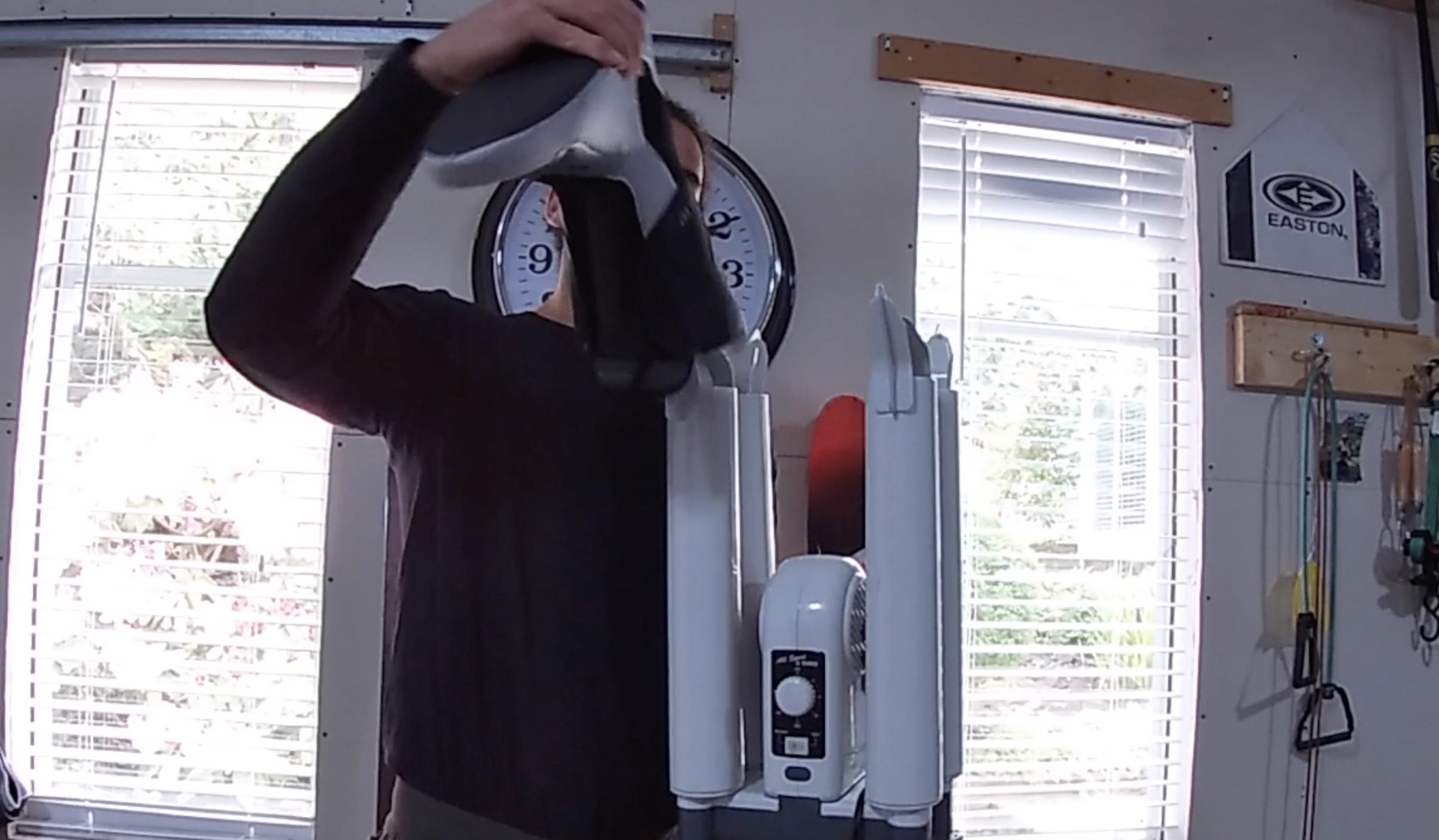
Reduce DIN Setting Tension
The functioning of Your DIN setting will quite literally make or break your knees on the mountain. To be safe on the hill you need a functioning DIN that releases when it needs to and doesn’t when it shouldn’t. Your DIN settings are tensioned by a spring in the heel and toe piece and should be set appropriately depending on your weight and skill level.
In the offseason you should unload the tension on your DINS by reducing them to the lowest possible setting. It is extremely hard on the springs to keep them torqued up all summer long. It’s super simple to lower your DIN’s, just grab a screwdriver and turn the DIN tensioning bolt to the left until the DIN reaches close to 1 or zero. Don’t forget to take note of your DIN setting so you can remember what to crank it up to before you clip into your bindings next ski season.
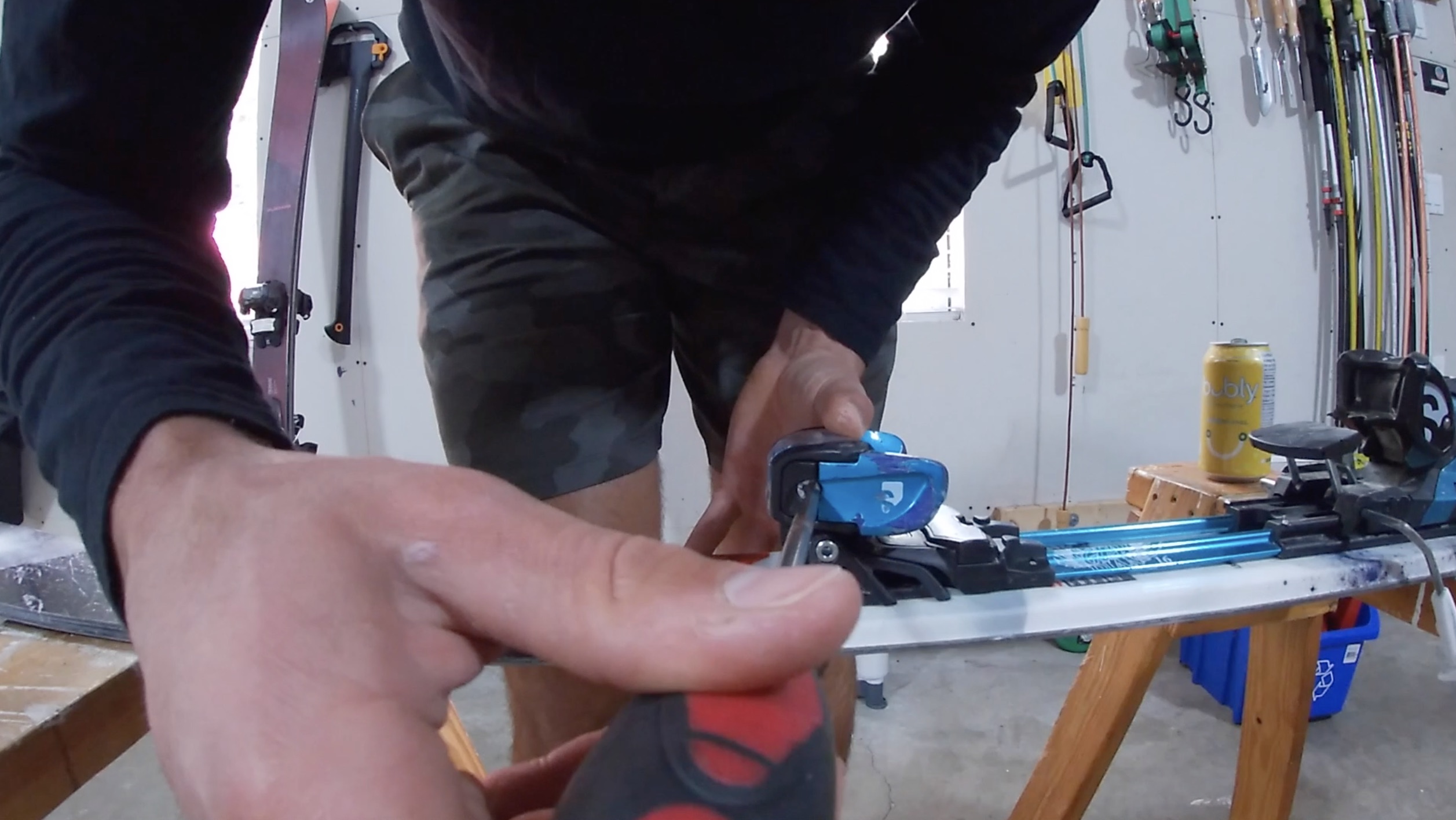
Tune Skis And Repair Any Edge Or Base Damage
If your ski bases or edges have any damage its best to fix it at the end of the year so they’ll be ready to go for opening day. I like to do a FULL TUNE on my skis before putting them into storage! If you have any base or core shots, use a p-tex stick and a scraper to fix them up.
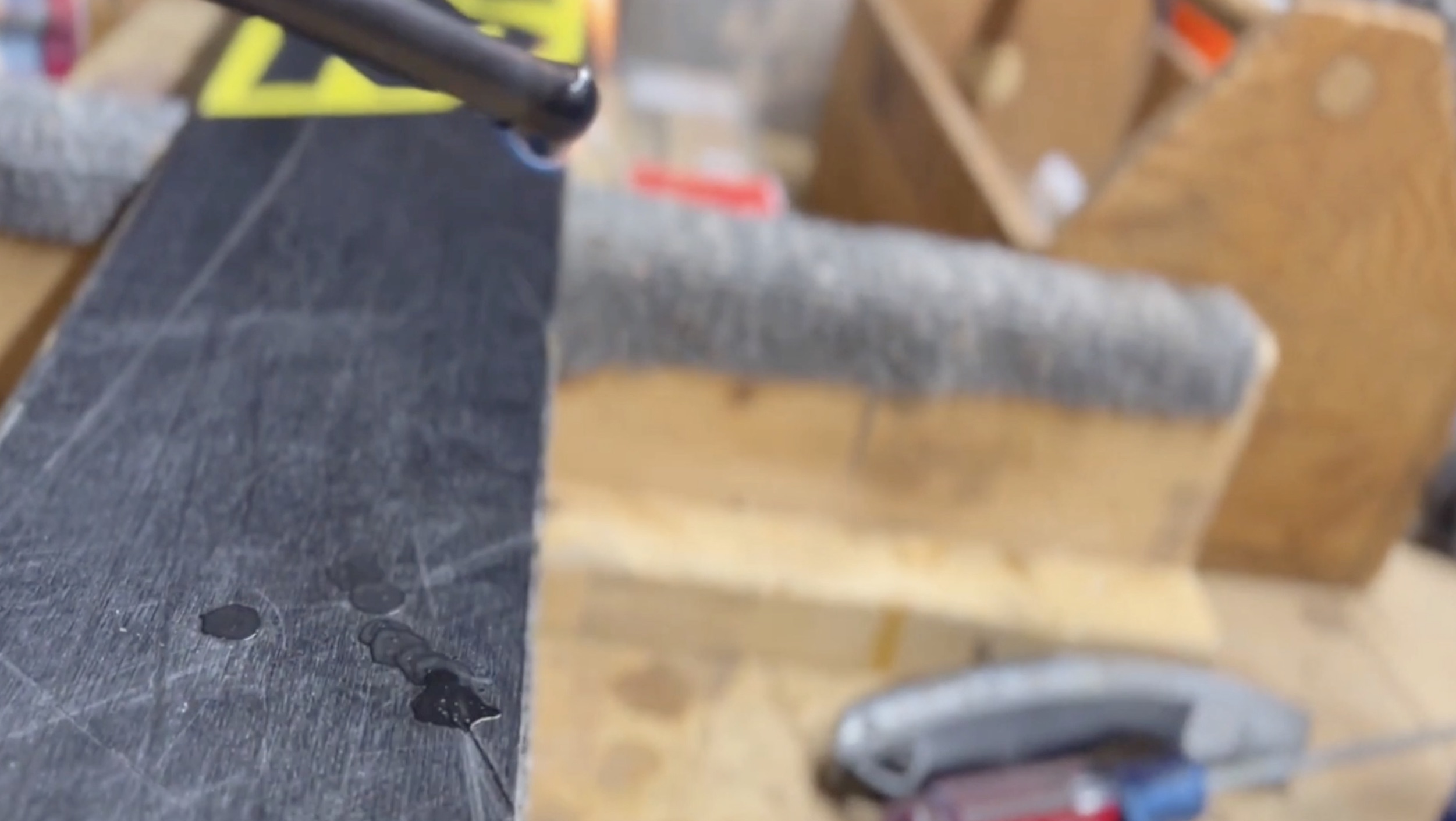
Apply Storage Wax
The base of your skis is constantly making contact with the snow and needs to be taken care of. A dried out ski base isn’t going to perform well and is going to ruin your ski over time. Ski bases can dry out quick so it is important to keep them hydrated. The best way to protect your base from drying out and from scratches and scrapes in storage is to apply a storage wax for the offseason. A storage wax is simply waxing your skis (with any sort of wax) and not scraping it off. There are some storage specific waxes but I just use the cheapest wax (Demon Wax) since I won’t actually be skiing on it. When next season rolls around, all you have to do is scrape the wax and you’re good to go.
I’ve written a full beginners guide to ski waxing teaching you how to get started if you’ve never done it!
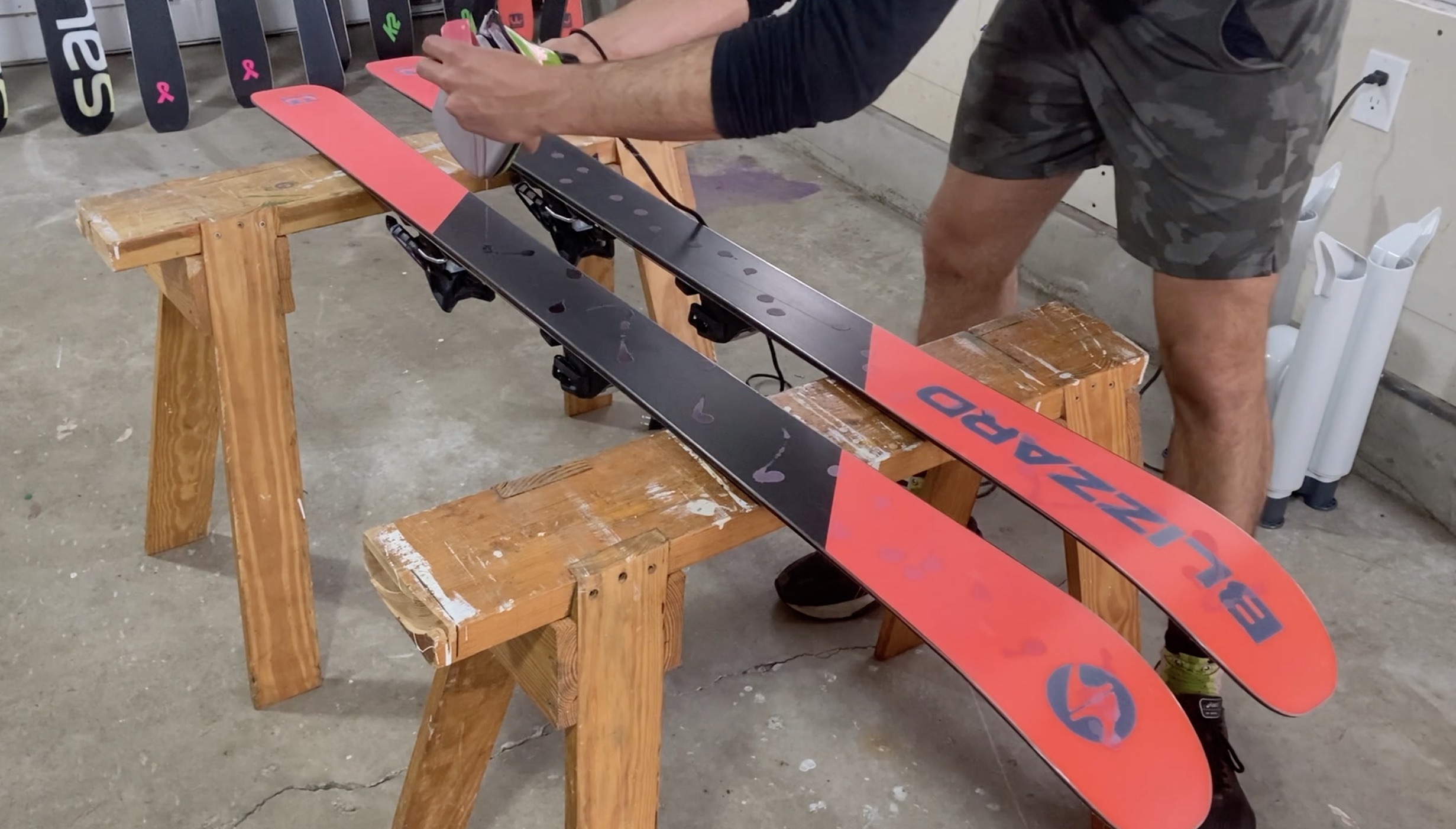
That’s All There Is To It.
Your ski gear is going to thank you and your performance is going to be top notch right out of the gate next season.
I look forward to seeing you on the Slopes.
Keep On Shreddin’

